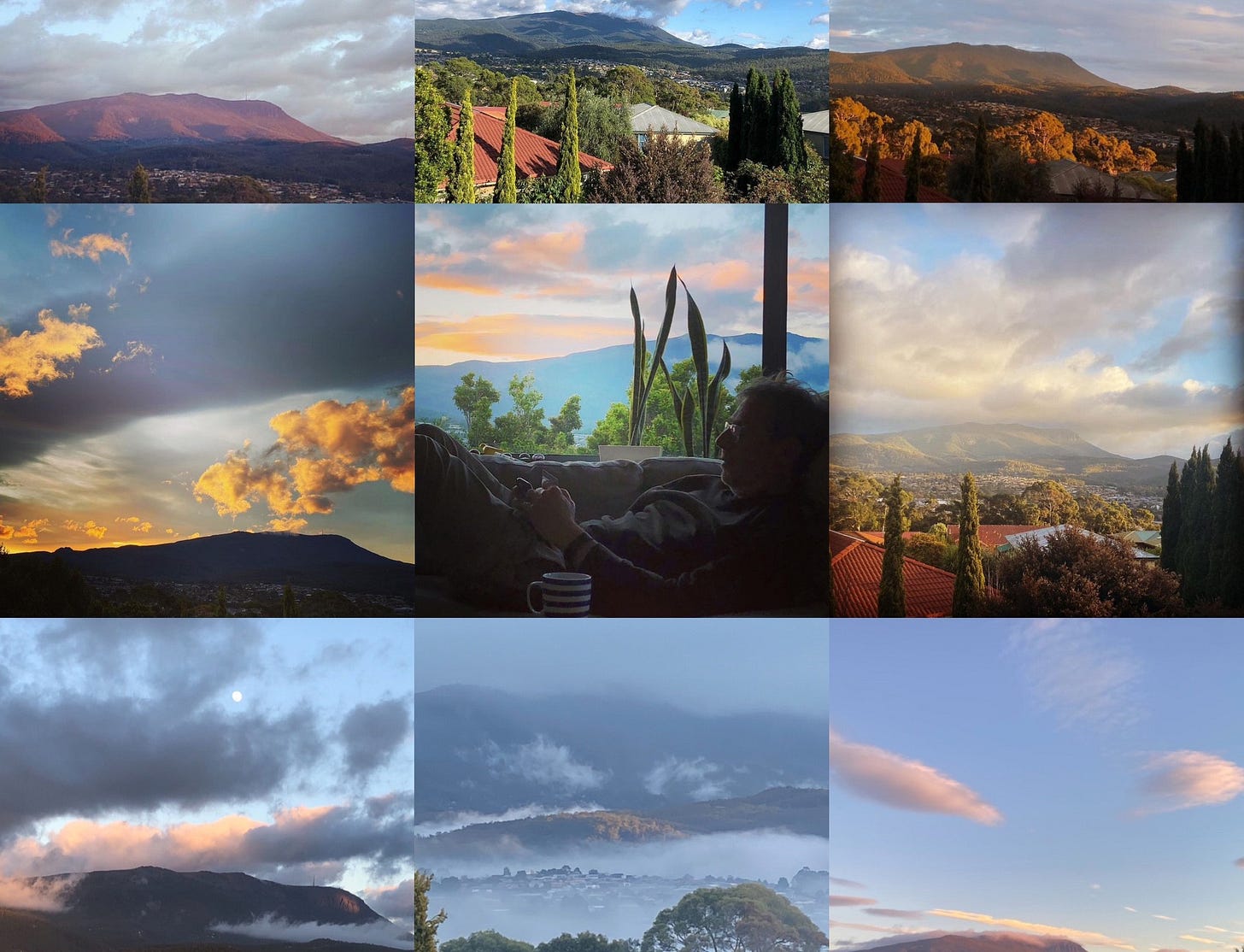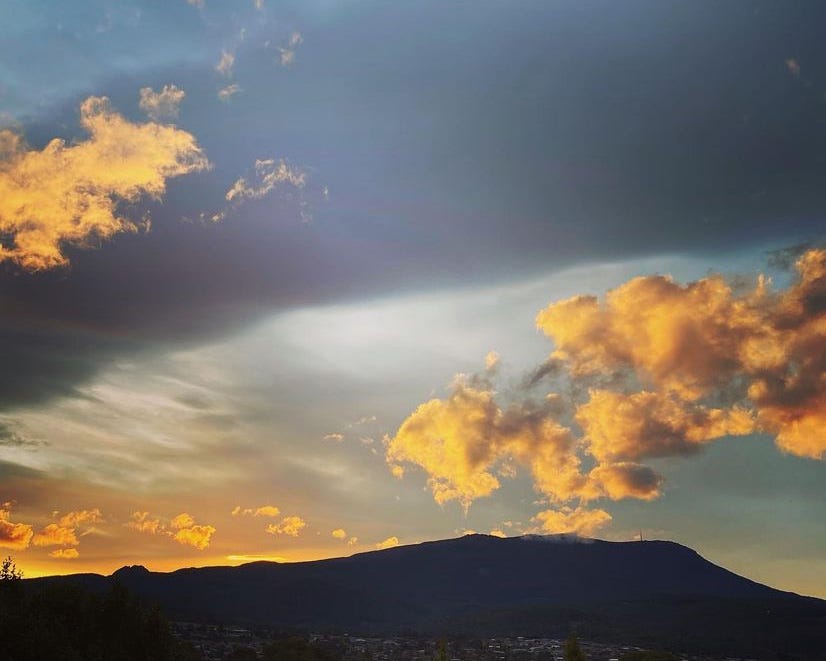When we were looking to buy a new home ten years ago I wanted a house with a water view and I was disappointed we could only afford a house with a view of a mountain — a first-world problem I know. I’d grown up on the Northern Beaches of Sydney and coastal outlooks were very much part of my sense of self. It took me a while to appreciate our new home with its view of kunanyi/Mt Wellington in southern Tasmania.
It was nice to discover that the northerly orientation of our house gives us more hours of sunlight than the houses with water views on the other side of the hill. This extra sunlight is not to be sneezed at when you consider Tasmania’s long and cold winters. There is snow on top of the mountain for a few months of each year. During the daylight hours, our living area which looks directly at kunanyi is always toasty warm and filled with natural light.
When new visitors arrive at our house they often comment on our view. The foreground of suburbia in the foothills between us and kunanyi is mostly obscured by trees and vegetation so the mountain’s full-on presence fills our floor-to-ceiling glass doors and windows. At 1271m above sea level, kunanyi dwarfs Hobart and its surrounding suburbs, including ours. Just to add to the drama, there is often a fast-moving cloudscape happening above the mountain.
I get up most mornings at dawn and am greeted with the presence and moods of kunanyi. The colours of the sky and the patterns of sunlight and clouds on the mountain’s contours are rapidly changing at this time. I go out on the deck and stand in the crisp air to take photographs of fleeting scenes that fill me with a sense of awe.
Over the years I’ve grown to appreciate the presence of kunanyi in my life. Its sheer presence induces humility.
On days of worry or overwhelm the ever-changing weather and cloud parade over the mountain remind me over and over again that whatever is going on in my life is only temporary.
This too shall pass.
A friend once told me that living on a mountain, or viewing one, is supposed to bring one closer to God. This made me think of a monastery I saw perched on top of a mountain on a Greek island we visited years ago. I remember saying to Alan: “How on earth do the inhabitants get up there?”
But back to ‘our’ mountain … kunanyi is visible from great distances and was an important landmark for aboriginal Tasmanians. Many stories and songlines relating to creation, navigation and what the mountain represents were passed down over generations: “over panupiri, with mapali: many suns and moons’’. The Muwinina people who lived in the area around present-day Hobart considered the mountain to be a pathway to ancestors and the spirit world.
Mountains provoke curiosity. I’ve always wanted to go up mountains to see what’s on the other side. Whenever Alan and I go on road trips we often take the time to go up the highest landmark in an area — to get the ‘lay of the land’. The broader picture and geography of the surrounding area can often give more understanding of place — and sometimes even the whys of its history.
A quick Google search of ‘the benefits of mountains’ brought up some interesting facts:
Mountains are the world’s ‘water towers’ providing 40 - 80% of the freshwater resources for our planet. Early Hobart relied solely on its fresh water supply from Mt Wellington/kunanyi up until the early twentieth century.
Mountain forests act as the earth’s lungs —absorbing vast amounts of carbon dioxide. A walk on a mountain is a different experience altogether to a beach walk. I can vouch for it — the air on kunanyi has a special quality: it’s intoxicatingly pure!
Mountain ecosystems provide a treasure trove of medicinal and other plants, and are rich in fauna. On kunanyi there over 500 native species and 130 exotic flora vegetation species. The mountain’s fauna is species rich with many significant communities and threatened species. The bird life is particularly abundant with at least 67 bird species in the broader Wellington Park area.
Mountains act as natural barriers, influencing weather patterns and protecting areas from severe weather events like cyclones. Hobart locals can testify that kunanyi creates its own weather too. For every 100 metres you ascend the temperature typically falls a degree. Since the summit is 600 metres higher than the coffee stop at the Springs, the temperature there is likely to be 6°C colder.
Mountains provide endless recreational choices. Mt Wellington/kunanyi offers so many opportunities for bushwalking, dog walking, trail running, bike riding, rock climbing, and other activities. It’s wonderful to see so many people appreciating what the mountain offers.
It is said that people look up to mountains as sources of inspiration, renewal, and wisdom. I am lucky that all those years ago I didn’t get my water view but one of a mountain instead. Mt Wellington/kunanyi has introduced many moments of awe into my life, has helped me put my problems into perspective, and continually makes me pause for moments of reflection on my life.
“What a glorious greeting the sun gives the mountains.”
- John Muir, Scottish naturalist and mountaineer, 1838-1914








It’s such an anchor to life in Hobart. Love your photos of your grand view too.
Awe and mountains go together. You do have an awesome outlook!